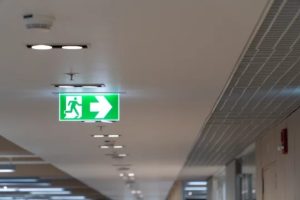The Role of LED Technology in Meeting BS 5266-1 Standards for Emergency Lighting
As we increasingly rely on technology for safety and efficiency, LED technology stands out as a pivotal advancement in meeting BS 5266-1 standards for emergency lighting. Particularly in the context of complying with the stringent requirements of these standards, LEDs offer numerous benefits that are hard to overlook. Read on to discover how LED technology can help your commercial property meet BS 5266-1 standards for emergency lighting and why making the switch could be your best decision yet.
Key Takeaways:
- LED technology offers energy efficiency, which aligns with the latest BS 5266-1 guidelines.
- Advanced testing and self-diagnostic features of LED systems contribute to compliance.
- LEDs offer greater reliability and lifespan, helping property owners to stay compliant with less hassle.
Why BS 5266-1 Matters
BS 5266-1 is a crucial standard for emergency lighting in the UK. It sets guidelines for the design, installation, and maintenance of emergency lighting systems. Failure to comply not only puts lives at risk but also exposes facility managers and property owners to legal repercussions.
LED for Energy Efficiency
One of the main areas where LED technology shines is in energy efficiency. The latest update to the BS 5266-1 standard encourages the adoption of energy-efficient lighting solutions. LEDs use significantly less energy than traditional lighting solutions, thereby reducing operational costs while meeting the standard’s recommendations.
Advanced Testing and Monitoring
Modern LED emergency lighting systems often come with built-in self-testing capabilities. This feature is a big plus when you’re aiming to meet BS 5266-1, which has stringent guidelines on regular testing and maintenance. The advanced diagnostics in LED systems can automate this process, ensuring that your lighting is always in compliance.
Longevity and Reliability
LED lights are known for their durability and long life span, often exceeding 50,000 hours of use. This reliability is particularly useful in emergency settings, where the failure of a single light can have serious implications. A long-lasting LED system reduces the frequency of maintenance checks, aligning well with the BS 5266-1 standard’s goals of dependable, long-term performance.
Simplified Installation
LED systems are generally easier to install compared to older technologies. This ease of installation allows for more straightforward compliance with the layout and design requirements specified in BS 5266-1.
Cost Implications
While LED systems might cost more upfront, the long-term savings on energy bills and maintenance can quickly offset the initial expenses. Given that BS 5266-1 also focuses on long-term system efficiency, LEDs become a cost-effective solution for staying compliant.
Conclusion: LED is the Future for BS 5266-1 Compliance
When it comes to meeting the stringent requirements of BS 5266-1, LED technology is not just a viable option—it’s increasingly becoming the go-to choice. Its energy efficiency, advanced testing features, and robust lifespan make it ideal for any facility manager or property owner looking to comply with emergency lighting standards.
Next Steps:
Ready to make the switch to LED emergency lighting? Consult with our experts to ensure you choose a system that is not only compliant with BS 5266-1 but also tailored to your specific needs.
For more insights on emergency lighting and compliance standards, subscribe to our newsletter or contact us directly for a personalized consultation.



